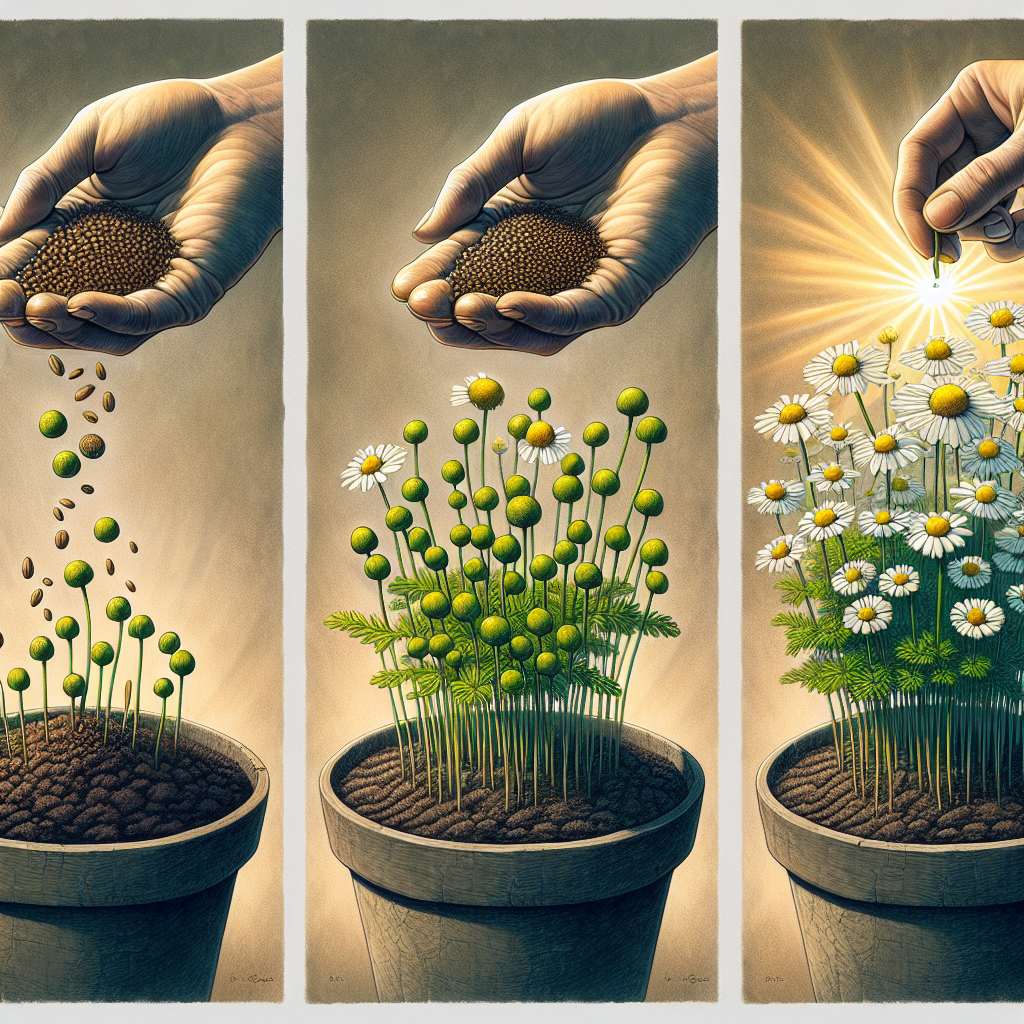
How to grow chamomile from seed
How to Grow Chamomile from Seed: A Comprehensive Guide
Chamomile is a delightful herb known for its calming properties and beautiful white flowers. Growing chamomile from seed is not only rewarding but also a great addition to both floral and herbal gardens. In this guide, we will walk you through the essential steps to successfully grow chamomile in your own garden.
Choosing the Right Chamomile Variety
Before diving into the process of growing chamomile from seed, it's important to understand that there are two primary species of chamomile that are commonly grown:
- German Chamomile (Matricaria chamomilla): This annual variety is known for its delicate flowers and is often used for herbal teas.
- Roman Chamomile (Chamaemelum nobile): A perennial variety that has a more intense flavor and is frequently used in aromatherapy and traditional medicine.
Deciding between these varieties will affect your garden layout, as German chamomile is a prolific self-seeder while Roman chamomile can provide a persistent patch in your garden year after year.
Preparing the Planting Site
Location and Soil Requirements
Chamomile prefers well-draining soil with a pH between 6.0 to 7.0. To prepare the planting site:
- Select a location that receives at least 6-8 hours of sunlight daily.
- Clear the area of weeds, rocks, and debris to create a clean planting space.
- Mix in organic matter such as compost to enrich the soil.
When to Plant Chamomile Seeds
The best time to plant chamomile seeds is in the spring, after the last frost has passed. In many regions, this can be as early as March. You can also start seeds indoors about 6-8 weeks before the last frost date if you want to get a head start.
Sowing Chamomile Seeds
Direct Sowing Outdoors
For those planting directly in the garden:
- Scatter the seeds lightly over the soil. Chamomile seeds are tiny and benefit from being surface-sown.
- Gently press the seeds into the soil without covering them with soil, as they require light to germinate.
- Water the area lightly to avoid displacing the seeds. Keep the soil moist until germination occurs.
- Germination typically takes place within 7-14 days, depending on temperature and moisture.
Starting Seeds Indoors
If you choose to start your chamomile seeds indoors:
- Use seed trays or small pots filled with potting mix.
- Sprinkle the seeds on the surface and lightly press them into the soil.
- Water gently and cover the trays with plastic to maintain humidity until germination.
- Once seedlings have emerged, remove the plastic and place them in a sunny location or under grow lights.
Care and Maintenance of Chamomile Plants
Watering and Fertilization
Chamomile is relatively low-maintenance, but adequate care will promote healthy growth:
- Water regularly, especially during dry spells, but avoid overwatering. The soil should be moist but not waterlogged.
- Chamomile generally doesn’t require heavy fertilization. A light application of a balanced fertilizer once during the growing season is sufficient.
Pest and Disease Management
Chamomile is hardy and resistant to many pests, but it can still experience issues. Here are some tips:
- Monitor for aphids and spider mites, which can be repelled with neem oil or insecticidal soap.
- Ensure good air circulation around plants to prevent fungal diseases.
- Practice crop rotation each year to keep soil health and reduce disease risk.
Harvesting Chamomile
Timing Your Harvest
Chamomile flowers are ready to be harvested when they are fully open, usually in late spring to early summer, depending on your planting time. To ensure optimal flavor:
- Harvest in the morning after the dew has dried for the best aroma.
- Use scissors to snip off the flower heads, taking care to avoid the stems.
Drying and Storing Chamomile
Once harvested, chamomile can be dried for later use:
- Lay the flowers in a single layer on a clean, dry towel or screen in an area with good air circulation.
- Allow the flowers to dry for about one to two weeks until they are completely dry and crumbly.
- Store dried chamomile in an airtight container in a dark, cool place to preserve freshness.
Using Chamomile in Your Daily Life
Chamomile is well-loved for its soothing properties. Here are some popular ways to utilize your homegrown chamomile:
- Herbal Tea: Steep dried chamomile flowers in hot water for a delicious calming tea.
- Aromatherapy: Use chamomile essential oil in diffusers or for massages.
- Skincare: Infuse chamomile in oils or creams for its anti-inflammatory properties.
Common Mistakes When Growing Chamomile from Seed
Even seasoned gardeners can make mistakes when trying to grow chamomile. Here are some common pitfalls to avoid:
- Overwatering: Chamomile prefers well-drained soil. Ensure not to create soggy conditions.
- Planting Too Deep: Always remember that chamomile seeds need light to germinate, so do not bury them.
- Ignoring Pest Problems: Keep an eye out for pests and address them promptly to prevent damage.
Conclusion
With the right preparation, care, and attention, you can enjoy the fragrant beauty of chamomile in your garden. Now that you know how to grow chamomile from seed, you can reap the benefits of this wonderful herb for years to come. Whether to relax with a warm cup of chamomile tea or enhance your garden’s aesthetic appeal, this herb is a fantastic plant to include in your gardening endeavors.
By Guest, Published on September 22nd, 2024